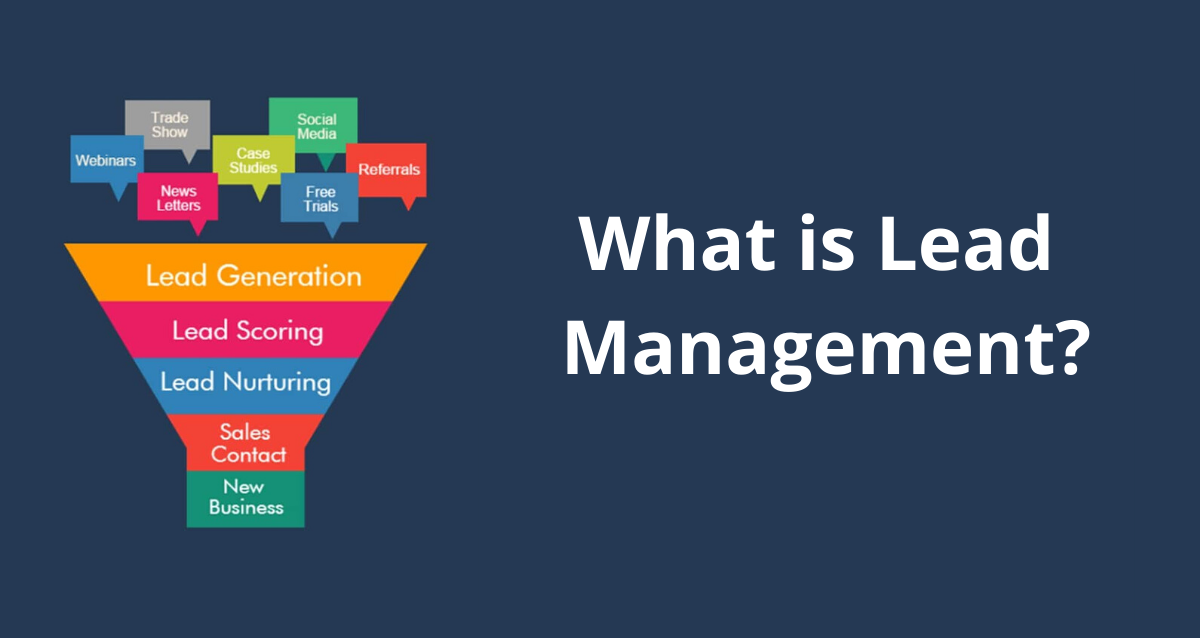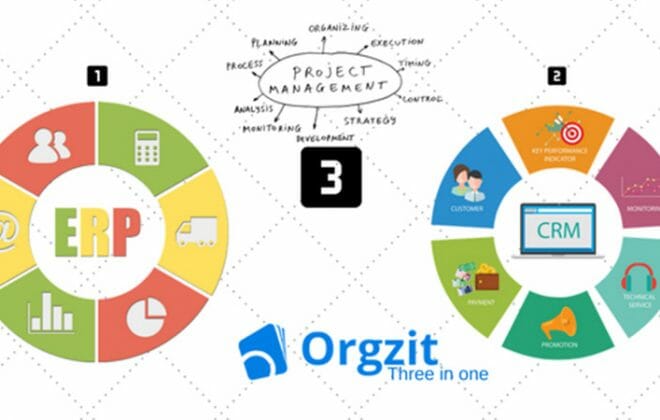What is Lead Management?
Overview
Leads are oxygen for any business irrespective of the size of the business and lead management is the blood.
Oxygen is an essential gas to survive for humans, leads are the same for any business.
As we know, oxygen is needed for breathing.
But you must be thinking why are leads considered as oxygen for any business?
Below we explain what are leads, what is lead management and why your organization needs it.
What are the leads?
A lead is anyone or a person who has shown his interest in your organization’s product or service. A lead can find his way towards your organization through numerous sources.
For example, your website, word of mouth and even through a phone call and can finally become a customer.
Remember, not every lead is a customer.
Hence, the customer is a lead who has traveled successfully through the sales funnel of your organization and made the purchase. It is important to know the difference between Customer v/s leads to understand this better.
Why are leads important?
Why do you start a business or for that matter anyone starts a business? To earn profits. Right? And where do these profits come from? The answer which will come into your mind is sales and sales come from LEADS!!
In short, it is a vicious cycle, which states, no leads no sales and no sales mean no profit, therefore no LEADS no PROFITS!!!
Now that we are aware of what are leads and why they are considered as oxygen for our business.
Let us gain some information on how to manage leads if we have plenty of them and how lead management paves a path for a business to grow successfully.
Imagine you are a painter.
You have a business where you sell paintings online to the people who are still fond of art. Currently, you have 4 leads who are interested in buying or at least knowing about your paintings. It will be easy for you to track 4 leads.
Lead tracking becomes easy when the number of leads is less.
But it becomes a matter of confusion when the number of leads is more. Lead tracking becomes next to impossible if the number becomes big and you start to lose potential leads. Now, imagine instead of 4 leads you have 1000s of them, how will you and your sales team manage it?
In comparison to numerous business organizations your painting organization will face the same problems. For businesses to grow, you have to convert leads to loyal customers. And to do that right, you need to manage sales leads in an organized manner. How will you do that? Through lead management.
What is Lead Management?
Imagine, your painting organization has a sales team of 4 people who are responsible for everything related to sales, leads, and profits.
Lead management is segregating leads according to their needs and desire, tracking them (what are their sources, documentation and determining where they are in the sales funnel?) and then determining if they are qualified enough to become a potential customer or not? They are willing to buy your product/ service or not? And then finally distributing the leads. Distributing them to your sales team according to the strength and abilities of your each and every sales team member.
Why Does Lead Management Matter?
In your painting organization, if someone ordered a landscape painting and you send them a dog painting instead, imagine how much that mistake will hamper the reputation and growth of your organization.
If you emphasize on this situation, why do you think this would have happened? Because of confusion and mismanagement.
Now imagine, if your website gets 10 leads every hour which makes the number of leads 240 every day. 240 a day is quite a big number to track.
So, there is a chance of you missing out on leads which could have been a prospect for your organization. Missing out on leads will prove to be a loss for your business, as you know no SALES LEADS no PROFIT!
Why do you think you will lose leads? Because you were not able to track them.
Lead tracking is an important factor in lead management, you will get to know more about this factor in the article ahead.
Therefore, to avoid such situations and more situations like these, lead management matters.
With the help of these two examples, you can conclude that lead management is not a one-day activity, it is a process.
In particular, a process that will help your organization in appraising which strategies are helping in bringing the best leads and profits.
Not only this, but lead management also helps you in keeping an individual’s full data of interactions and experiences with your organization, which helps you in analyzing how an individual became a lead, then lead became a prospect and prospect finally became a customer.
Lead Management Process
As I said earlier, lead management is a process, every process has some steps to follow so does lead management.
1. Lead Capturing
As you are a painter and you own a painting organization that delivers paintings at the customer’s doorstep,.
Your organization must be having a website through which leads get to know about your business and move further.
Therefore, whenever someone will land on your website, they will become a lead and then if they sign in, you will be able to save their information.
Lead capturing is the process of saving your lead’s information to contact in the future in order to market your product and with the intention of converting them into a prospect or a customer.
2. Lead Tracking
When a lead is captured successfully, the Lead Management software used by your organization will start tracking the activities done by the leads. Activities like:
- Track the telephonic conversation
- How much are they spending on your website and blog?
- Are they filling any sign-up forms?
- Are they trying the free trial services
Therefore, Lead tracking is a process of tracking the activities of your leads which gives you valuable insights about your leads which will help you in your next step.
3. Lead Qualification
Your organization sells paintings, so the profit will come from the customers who really want your paintings and value art.
So, every lead you capture will not be a prospect.
Before you wonder, what is a prospect? Let me define it in short.
Therefore, a prospect is a person or a lead who has the potential to buy your product.
For instance, if a 15-year-old child lands on your website while playfully surfing the internet and fills the sign-up form, he then becomes a lead for you. But this lead will not turn into a prospect because he does not have the potential to buy your product.
Lead Qualification is the process of identifying whether a lead has the right qualities to qualify for becoming a prospect or not.
4.Lead Distribution
After capturing and qualifying the leads, it’s time to distribute them to your sales representative team. But there are some points you would have to consider while distributing leads.
As we know, your painting organization has four members on the sales team. Each member has different strengths and abilities inculcated in them.
And each one of your leads will have different goals, needs, and desires.
Matching these leads to the sales representative who has the correct abilities to seal the deal is called lead distribution.
In simpler words,
Lead Distribution is the process of distributing leads according to their needs, desires, and goals to the correct sales representative.
5.Lead Nurturing
Now that you know your leads and prospects, it is not a compulsion that every lead or prospect will turn into a customer at that time, but at some point in the future, he can be a customer as he holds the potential to be.
Therefore, with such leads or prospects, your organization should maintain a good relationship and your sales team should be tracking them. Not only making a good relationship is enough, but making a good image of your organization in their mind is also necessary.
As a result when they finally make their mind to buy any painting, your painting organization becomes their first choice.
Lead Nurturing is the process of maintaining a relationship with individuals and creating awareness and a good brand image of your organization and product so that you come to their mind first when they finally decide to buy.
Benefits of Lead Management
1.It saves your valuable time
Any system which is automated is meant and designed to save time, so does lead management software. Therefore, this software is designed in a way that automatically assigns tasks to the team which leaves you with enough time to pursue the leads and convert them into an actual business.
2. Keeps Transparency
Transparency is an important element for any business to establish a cleaner and healthier work culture in your organization. Lead management software has the capability to assign the leads to the salesperson in a transparent manner, hence, complaints of work overload do not arise, etc. Internal communication with your sales team becomes easy and increases the level of transparency.
3. Lead Tracking becomes efficient
The biggest challenge of an organization that does not use any lead management software is to differentiate between leads that are more or less likely to convert into prospects and customers. In such situations, the Lead management system becomes enormously valuable. By closely tracking your leads, you can optimize the experience for those leads that are closer to conversion—making better use of your time and money.
4. Improve team coordination
The right lead management software will provide you and your team with lots of information about every single lead. This information will help your sales and marketing department work cooperatively by taking help from the same information. Besides this, it can help increase lead generation and lead conversion by creating a more focused sales funnel. Hence keeping everyone on the same page will help in reducing mistakes and miscommunication.
5. Better insights about the leads
Keeping a track on the high-quality leads is a must.
Lead management helps you to do that with a very efficient lead tracking system. You can keep an eye on the customer journey and get an unprecedented vision of the decision-making process. Not only will this help you convert the leads you are tracking into customers but will provide a roadmap for the better customer journey.
How Does it Help?
Finally we have the required knowledge about what is lead management and why do we need it, lead management process, etc. Let us know how it will help your painting organization.
Prevents missing out on leads
The lead management system tracks every lead and ensures every lead is automatically fed into the system from web forms, emails, chats, etc.
Better and useful information about leads
To convert leads into customers, information about them and their activities is necessary. It makes your sales process easy. A lead management system helps you in getting the information you need about the leads without any struggle.
Saves your time from getting wasted on wrong leads
As we know not every lead converts into a customer. But how do we know that? Through lead tracking and that is done efficiently by the lead management software.
It helps you in knowing which lead has the chances of converting into a prospect or a customer and prevents you from wasting your time on a wrong lead.
Helps you in analyzing which marketing strategy is working
Lead management software also captures the source of the leads, which will let you know which marketing strategy is working and which is not.
For example, if more leads are coming through your website, you know that your website is giving you business.
Helps in impactful Lead Nurturing
Lead management software makes it easy to nurture the leads who are more likely to get converted into a customer.
Hence, leads that are nurtured by email marketing or other methods are more likely to convert into a customer.
Warning signs that your organization is in need of Lead Management.
How will you get to know that your organization needs lead management?
There will be several signs, you just need to be attentive and aware.
This article will guide you through some of them.
- When there is no single source of information
If your sales team is constantly juggling between the different tools to get access to the lead information.
- Missing out on follow-ups.
If your sales team is forgetting to make a follow-up call or send an email to the prospect.
Hence, making your prospect go to your competitor.
- Improper or no lead tracking
You are losing your customers because you are unable to track the lead’s activities and get useful insights about the leads.
- No method or process for qualifying leads.
Your organization does not have any process to qualify or score leads.
As a reason of that you are wasting your time on wrong leads instead of using that time to persuade potential customers.
- Improper Lead Nurturing
If your sales team is only focusing on already built relations instead of focusing on the leads and prospects which are in extensive need of relationship-building. In other words, Bad or no CRM (Customer relationship management).
- Lack of visibility
Lack of access to the lead’s buying journey to provide him with the right subordinates and documents to move him through the sales funnel.
Final Thoughts
Now you know why leads are oxygen and lead management is blood for the successful sales operation in your organization. Without this, there is no need for the sales team or any lead management software in the first place.
If you want to know which Lead management software will prove to be the best for you, take a look at our next article.
I hope this article was helpful enough for you in finding the answers to your questions. If you find this article useful, do tell me about it by commenting below and giving it some stars. Do share it with your colleagues, so they can also get some answers.









